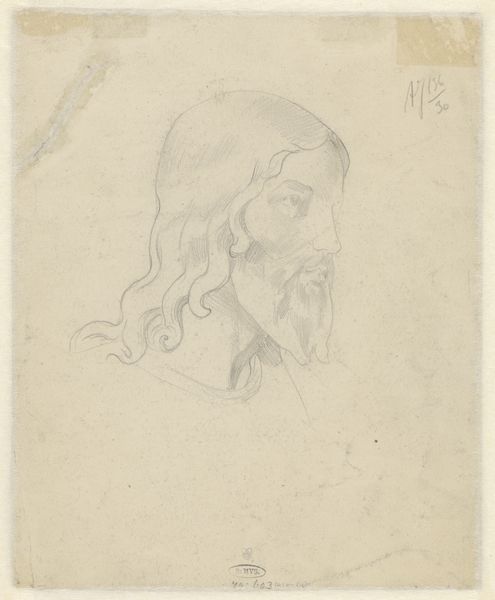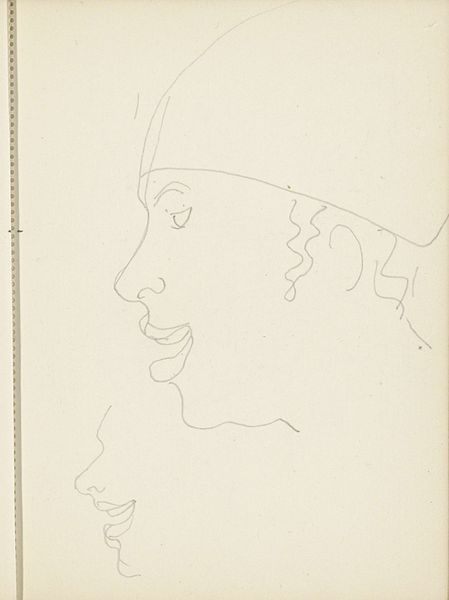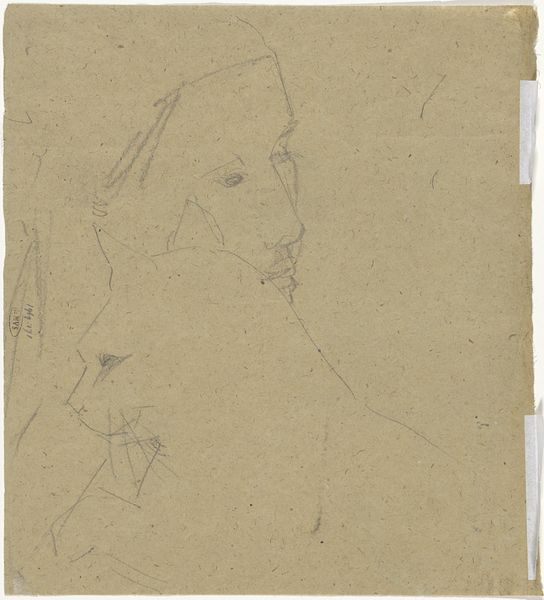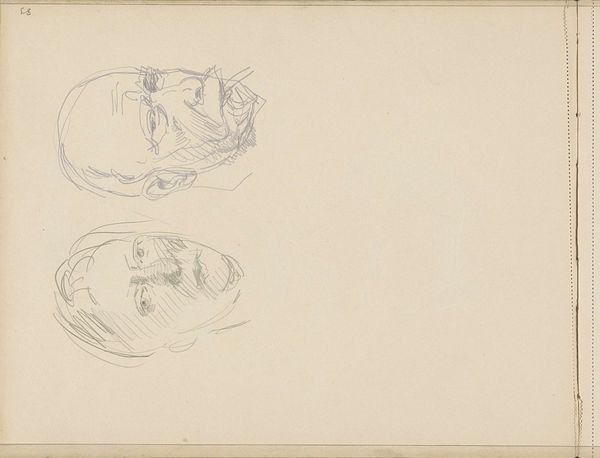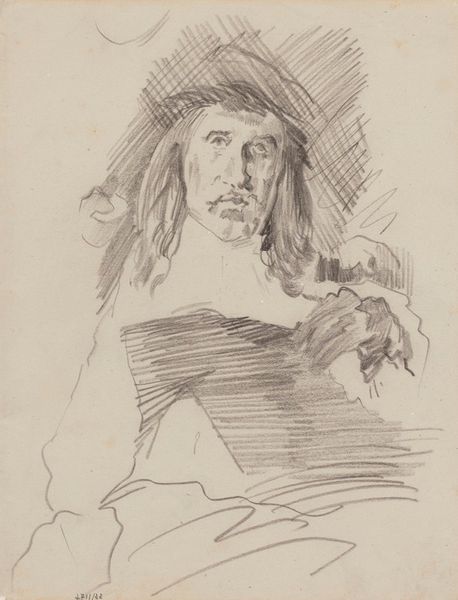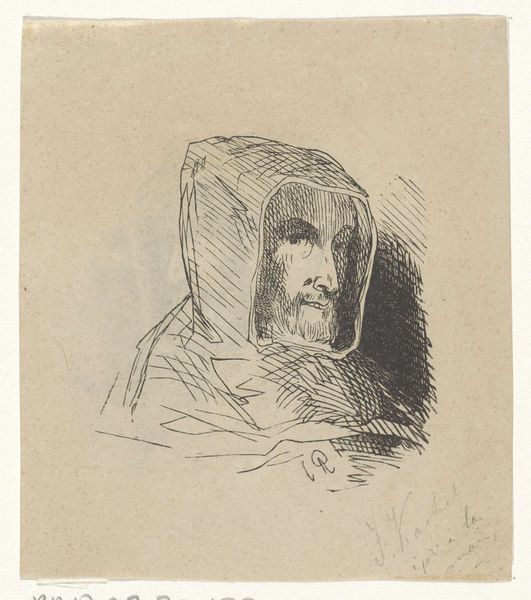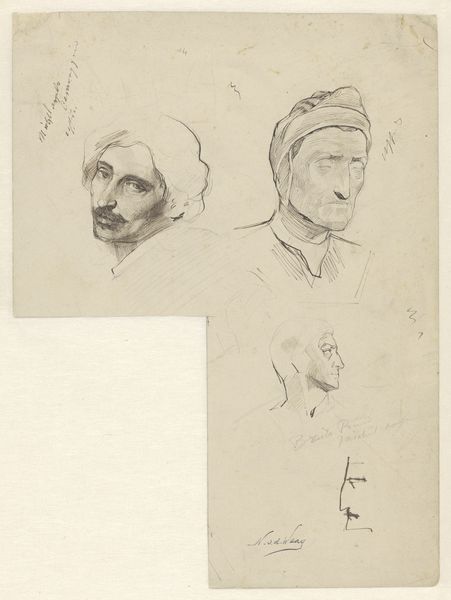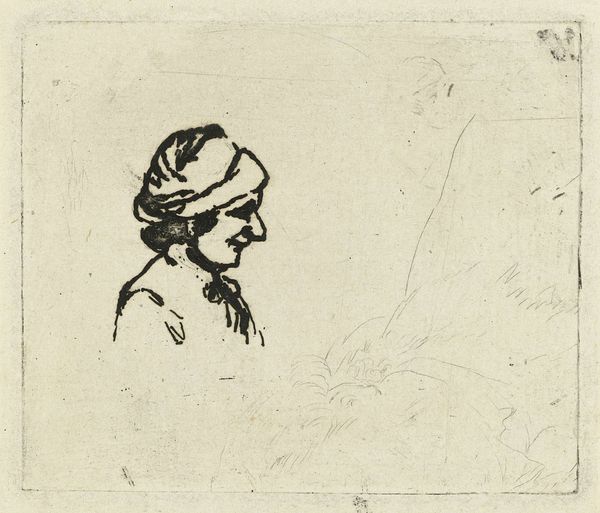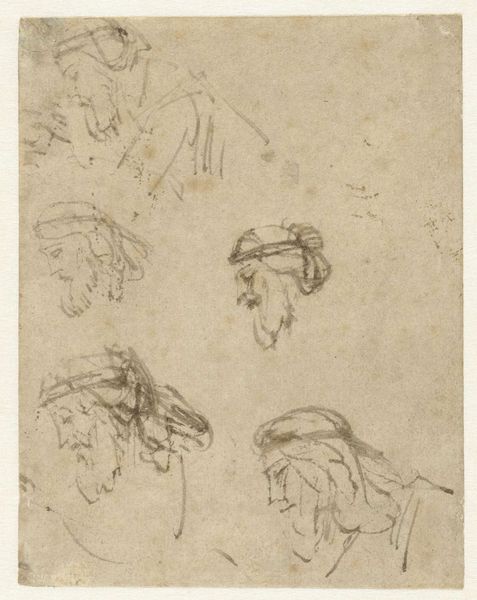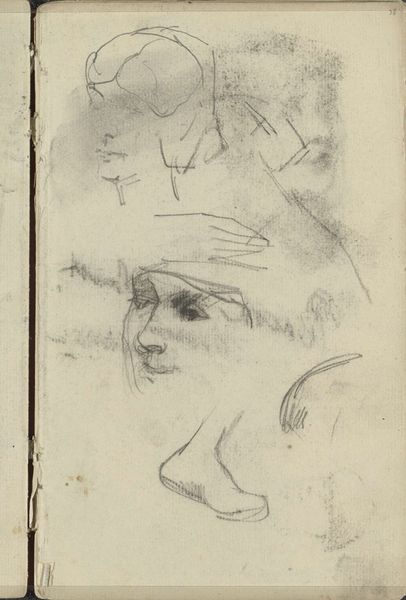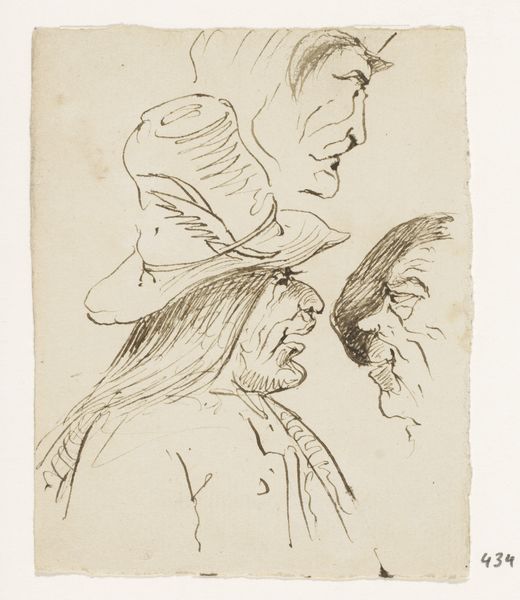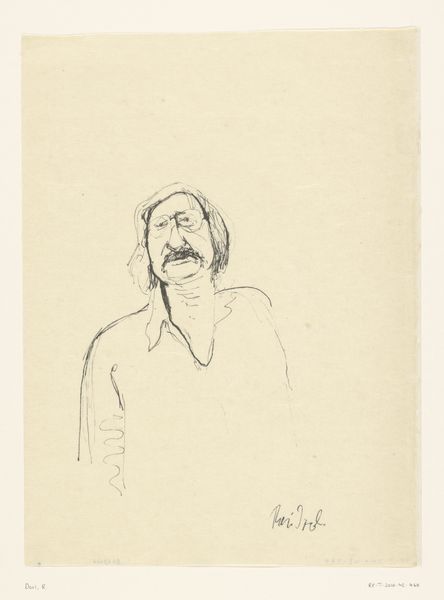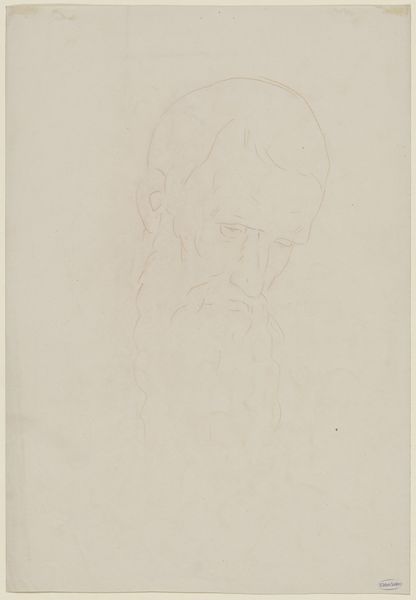
drawing, pencil
#
portrait
#
drawing
#
comic strip sketch
#
imaginative character sketch
#
self-portrait
#
quirky sketch
#
figuration
#
personal sketchbook
#
idea generation sketch
#
character sketch
#
ink drawing experimentation
#
pencil
#
sketchbook drawing
#
storyboard and sketchbook work
#
academic-art
#
sketchbook art
Dimensions: height 182 mm, width 234 mm
Copyright: Rijks Museum: Open Domain
Editor: Here we have "Studies van een manskop," or "Studies of a man's head," by Johan Daniël Koelman, created sometime between 1852 and 1859. It's a pencil drawing, and there's something so intimate about these sketches, like a peek into the artist's private thoughts. What do you see in this piece? Curator: It’s interesting that you use the word “intimate.” I’m drawn to this piece as well, but through the lens of its historical moment. Koelman was working in a period grappling with burgeoning nationalist sentiments across Europe. I see these “studies” as more than just personal exploration. They could represent an attempt to define and codify a visual "type"—almost as if he is searching for the characteristics of a "Dutch" man through physiognomy. What does his pose suggest to you? Does his gaze seem directed, or introspective? Editor: Introspective, definitely. The lower head study seems weighed down with…something. Now that you mention the nationalistic context, I'm wondering if it portrays a sense of burden tied to the era's expectations or maybe social inequalities? Curator: Precisely. These “types” that artists sought to create often reinforced existing social hierarchies, especially concerning gender and class. His apparent downcast eyes could hint at the social and political pressures felt, especially for a man during that period of immense social change. We must consider: who had the luxury of not being burdened, and whose burdens went unseen or unacknowledged? Editor: So the casual sketch is not so casual after all. It's a product of its time. It encourages thinking beyond the surface to dissect historical tensions of identity. Thanks for offering this perspective! Curator: Absolutely! Art always engages in a silent dialogue with its socio-political surroundings; the trick is to learn how to listen. It makes me consider how this could inform today’s identity debates.
Comments
No comments
Be the first to comment and join the conversation on the ultimate creative platform.
